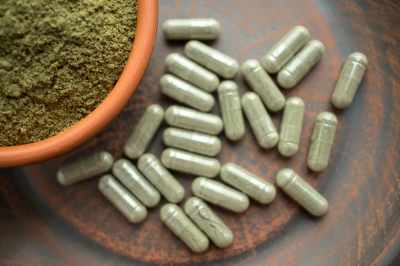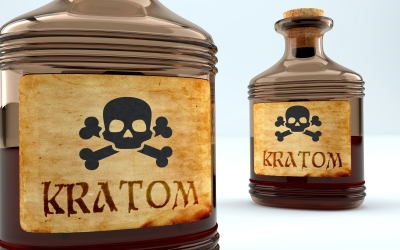Table of Contents
Kratom Abuse and Addiction News
Faith Day was jail-free but homeless by her mid-20s. She was also addicted to a substance that is now too legally compromising to mention. When she attempted to quit, she couldn’t afford the medication to cope with the kratom withdrawal symptoms.
She searched the internet for answers. News about kratom, a plant kept coming up in her social media feeds, alongside claims that using it would help her break free of addiction. Running out of options, she used her last $140 money that would have otherwise gone to the destructive drug on which she was addicted on an ounce she found at a head shop.
Two weeks later, she had kicked the drug; she has not relapsed since. Now, Day dedicates her life and career to kratom. She’s no back-alley pusher her goal is to get kratom out of gas stations, head shops, and dark street corners and into the legal light of day.

According to some scientists, there are between 10 million and 15 million users of kratom in the United States alone.
They are using the drug for a wide range of purposes, from chronic pain relief to a replacement for their morning coffee.
Kratom is not an illegal substance; unless you live in one of the six states where its possession was declared illegal, or are part of the US Navy or Army, which also banned the drug, kratom products are legal to buy and sell.
However, after kratom occurring in the systems of dozens of people who have succumbed to drug overdoses, the federal government is toying with the idea of totally banning it.
Although it warns consumers of possible opioid-like effects, scientists have questioned the FDA’s criteria in coming to that conclusion. Some people, like Day, assert that kratom saved their lives. Others will ask whether she’s selling the “legal heroin.”
Day runs one of only two kratom businesses licensed by the Department of Agriculture in the country. If you missed the sign, you could take her Oregon storefront, Clean Kratom Portland, for a coffee shop or a trendy marijuana dispensary.
The atmosphere here is sweet and spicy with incense, the walls bright white and pale green, the plants in plenty, the bar wood, and the binders of lab tests numerous. She wears a long cardigan and a cautious smile. Every visible expanse of her skin is tattooed—hands, neck, chest, face.
As they move upward, the tattoos turn from dots and birds to the structural formulas of chemical compounds that occur in kratom. The arc of hexagons right above her left eyebrow is speciogynine, considered to be a smooth muscle relaxer. She credits it with stopping awful convulsions of withdrawal.
Day started her kratom establishment in Denver, and she’s in Portland for just one reason: Google Trends. Of all the people in the US, it’s Portland residents who search for kratom the most per capita on the search engine. It’s hard to tell why that might be the reasons individuals give for using kratom vary widely.
It’s just as fruitless to try to stereotype an average American kratom user. Some are trying to quit opioids or alcohol while others are trying to cope with chronic pain, improve their eyesight, clear up their skin, boost their immune systems, or just get high and have fun.
Day says that a third of her clientele are soccer moms looking for a caffeine-free alternative to get them through their day. Like many semi-illicit high-value crops, the kratom industry is also based on frequently exploitative labor practices, mostly in remote and rural areas in Indonesia.
According to Day, who imports kratom from the country, the US has been pressuring Indonesia’s drug enforcement agency, the BNN, to ban the plant by 2022, jeopardizing the kratom farmers’ livelihoods.
So the FDA and DEA’s worries aren’t groundless. “They are rightly worried about any substance that they have very little authority over that patients and users are using to self-treat medical conditions,” the University of Florida’s Grundmann says.
“When you talk about withdrawal, depression, anxiety—that usually belongs in the hands of a medical professional.” However, many seem to disagree that this is enough to call for a ban, though. Additionally, cutting off any legal way for those consumers to get kratom takes away any oversight the agencies have.

Instead, it might be more helpful to consider what kratom’s widespread use says about where our culture around drugs and medicine is now.
“Many kratom users I’ve talked to don’t feel comfortable interacting with doctors, which is to their detriment,” the University of Rochester’s Swogger says.
“But we can’t pretend like the medicines we’re providing are getting to everyone. They’re not.” While not everyone who takes a kratom supplement has a story as dramatic as Day’s from homeless substance abusers to business owners and mothers it’s filling a need for millions of people.
The need to regulate, but not ban, kratom use is already being acknowledged on the state level: The Kratom Consumer Protection Act has been passed in Arizona, Georgia, and Utah, and is pending in Oregon.
“If it was as dangerous as the media says, I don’t think that would be happening. Nobody’s passing a heroin consumer protection bill,” Day adds. “It’s just weird.” You probably know how Portland feels about weird. The place plans on keeping it.
You’re On The Right Track
To learn about Kratom drug addiction and its withdrawal symptoms, as well as what happens after a successful detox, consult with United Recovery project experts today. We offer a wide range of drug rehab programs including medical detox, inpatients, outpatient, intensive outpatient, and partial hospitalization programs.
URP Partial Hospitalization Program
United Recovery Projects Partial Hospitalization Program allows clients to take advantage of the many services offered by the United Recovery Project while continuing to live at home, unlike traditional programs. The patients who enroll in this program grappling with a Kratom addiction are ensured to have the structure essential within the beginning of their recovery process and are not required to leave their cherished ones or even the comfort of their homes.
URP Intensive Outpatient Program
Our intensive outpatient program is tailored towards a flexible plan, ensuring that you are unrestricted towards remaining for the duration of your specific plan or perhaps reside for a longer period of time if you feel the need.
URP Alumni Program
We understand that the road towards recovery is not an easy one as you go through this newfound path towards long-term sobriety; therefore, we present you with our Alumni program tailored towards ensuring that you can ask questions and speak freely to people who have been in your shoes. This program will better assure that a burden is lifted off your shoulders as you break away from your Kratom addiction.
Your Long Term Sobriety is Within A Phone Call Range!
Promptly contact us today if you or someone you love is struggling with a Kratom drug addiction. We want to provide you with the best resources to have the best life possible for you and your loved ones. For more information on addiction, rehabilitation, and other helpful resources, please read our other blog posts or Contact our United Recovery Project center at 888-960-5121 today.


